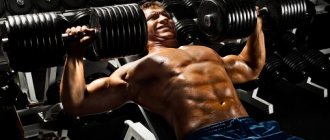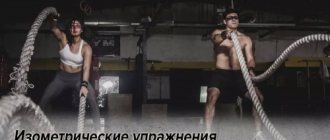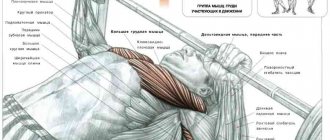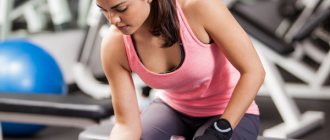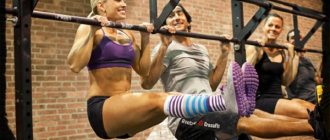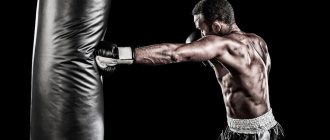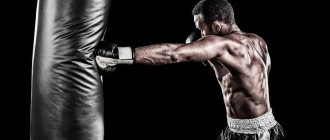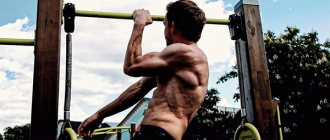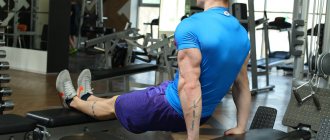You've probably seen vests that look like bulletproof vests on training athletes more than once. This is a special weighted vest for training. Its additional weight increases the load during training and significantly improves your athletic performance.
In order for training to bring results, you need constant progress in the load. If you train with your own weight, you can use additional weights - dumbbells, barbells and other weights. But, if you prefer cardio, for example, then what should you do? The best option would be a special weighted vest.
In order to get into ideal athletic shape, you need to alternate between cardio and strength training. The vest will help you combine 2 types of load at once and speed up the results.
What is a weight vest?
The simplest design of the projectile is a very heavy vest, through which you can put your hands, and fasten a zipper or Velcro in the center. However, upon closer inspection, you will find that all vests are designed differently.
Some are not much different from the body armor worn by military and law enforcement officers. They have two vertical metal inserts - one at the front and one at the back.
Other vests are equipped with additional space in order to increase the additional weight by 10, 20, 30 kg at will. Manufacturers equip products with additional pockets for weights or sandbags, which promotes active fat burning and increased strength.
Most often, such equipment is dealt with by athletes who use it while doing squats or boxing jumps, as well as to build up explosive strength.
Types of weighted vests and what weight they are
Vests can be weighted from five to fifty kilograms! The athlete puts these vests on himself. At the same time, the total load increases, and the limbs remain free. The weight of the vest can be adjusted by placing the load on the pockets sewn over the entire area.
The weights for the weighted vest are made of metal, and the pockets are sewn evenly over the entire area. These vests resemble vests for hunters with abundantly sewn places for rifle cartridges - a bandoleer.
Those athletes who are looking to improve strength and endurance should opt for vests designed for a weight of 15-20 kilograms. These vests are suitable for jogging, parallel bars, horizontal bars and even swimming!
When is training with weight vests productive?
First of all, we need to find out: do weight vests really help in training, providing the necessary body conditioning and performance in the long term? Research results vary.
Some studies suggest that training with added weight can improve an athlete's speed. While other studies have shown that it is not much better than training without a vest.
Whether you use it or not is up to you. Taking into account several variables (weight, duration of training, frequency and type of training) you will come to the most correct decision.
What to look for when choosing a vest
Vests are not the cheapest equipment. The specific price depends on the model and can range from 3 to 16 thousand rubles. To avoid wasting your money, pay attention to the following parameters.
Ability to change weight
Some vest models have sand or metal weights built into the vest so you can't change the weight.
On the one hand, this is convenient, because you don’t have to bother with sand and buy additional weights. On the other hand, it will not be possible to adjust the load in different exercises and use the vest for people with different body weights and levels of training.
Moreover, it is better to start training in a vest with small weights of 5% of body weight so that the body gets used to the load. And only then increase the weight to 10–15% or more, depending on the type of exercise.
So it is better to consider options with the ability to adjust the weight. Just keep in mind that weights are often sold separately from the vest and you will have to pay extra for them.
What to buy
- Weighted vest Evergrip Weighted 10LB (4.5 kg), 4,990 rubles →
- Everlast "FIT 40LB" Weighted Vest. Weight 18 kg, 15,490 rubles →
Type of weights
Cargo can be presented in the form:
- sandbags;
- bags of shot;
- steel bars or cylinders;
- metal plates.
Shot: MONKO™ SANDBAG/ YouTube
Sand options are usually the cheapest. However, they have a few disadvantages: they are quite bulky, so doing push-ups, burpees and many other movements will be uncomfortable.
In addition, over time, sand begins to fall out, especially if you buy a model that is not of the highest quality.
Some vests use plates as weights - such weights provide a more even distribution of the load throughout the body, unlike the same bars, with which the weight can be concentrated only in the lower or upper parts of the product.
However, with plates you will not be able to flexibly change the weight of your equipment. While bars allow you to add 500–900 g, slabs have a mass of 2.5 to 10 kg or more.
So if you want to add weight gradually, it's worth considering weights in the form of bars or bags of shot.
What to buy
- Iron Star weight vest 10 kg, 5,990 rubles →
- Vest with weights Original FitTools SWAT 14 kg, 13,190 rubles →
- Weighted vest Iron Star S4 Professional, 9,990 rubles →
Type of fasteners
The type of fixing elements determines how tightly the vest will fit during exercise and whether it will not unfasten due to your movements.
If you plan to do low-intensity cardio or strength training in the vest, options with a belt and a plastic clasp are suitable.
And for running, jumping or interval training with a wide range of motion, it is better to consider models with double Velcro. They provide reliable fixation of equipment and are unlikely to break under heavy load.
Benefits of weighted vests
Let's put science aside for a moment. What works really well, as trainers in fitness clubs assure, is combining vests with cardio training and exercises with your own weight:
- Nothing will get your heart rate up faster than wearing a vest while walking on the stairs or on the treadmill.
- Vests put stress on your shoulders and entire upper body. This means that the respiratory muscles - the diaphragm and the deep areas between the ribs - are actively involved in the work. This situation leads to the fact that the heart begins to beat faster, making breathing difficult. Many people can't cope with this and start to panic. In this case, you should take it as a kind of breathing and calmness training.
- In addition, there is an active burning of calories due to accelerated metabolism.
- Another reason why trainers love a weighted vest: it allows you to achieve the effect of heavy training on weight machines, while the workout itself is done with your own weight.
- The extra weight makes the exercises as effective as possible. The vest makes it possible to switch from one exercise to another if you need to change the barbell to dumbbells, for example.
- Much like the combat armor you see on guys loudly working out at the gym, weight vests can make the wearer stronger and faster, provided they are used correctly.
What You Can Achieve Using a Training Vest
Increase jump height
If you play sports where jump height is important, training in a vest can improve your performance.
In an experiment, The effect of extra‑load conditioning on muscle performance…: Medicine & Science in Sports & Exercise, involving 14 adult sprinters, it was found that three weeks of training in a vest with a weight of 7–8% of body weight significantly increased jump height and lower power. limbs.
In other small studies, training in a vest helped improve jump test performance in jumpers and throwers. The influence of extra load on the mechanical behavior of skeletal muscle, basketball players. Effects of a Plyometric Training Program With and Without... : The Journal of Strength & Conditioning Research, weightlifters. Redistributing load using wearable resistance during power clean training improves athletic performance and rugby playersEffect of 8 days of a hypergravity condition on the sprinting speed and lower‑body power of elite rugby players, female track and field athletesHypergravity Training: Women's Track and Field : The Journal of Strength & Conditioning Research and non-athletic young men Effect of weighted vest suit worn during daily activities on running speed, jumping power, and agility in young men who did not exercise, but simply wore a vest all day.
Improve your weightlifting results
Since explosive leg strength is extremely important for performance in weightlifting, it can be assumed that training in a vest will be beneficial for this sport as well.
Thus, one small study, Redistributing load using wearable resistance during power clean training improves athletic performance, involving 16 weightlifters, showed that five weeks of training in a vest with 12% of body weight increased one-repetition maximum in cleans by 4.2%, while exercise without a vest in the control group - only by 1.8%.
In addition, such training increased the speed of lifting the barbell while working with 90% of 1RM and improved its trajectory when working with weights at 70 and 90% of 1RM.
Burn more calories during your workout
Dr. Len Kravitz from the University of New Mexico conducted an experiment called ACE Research: Improve Walking Workouts with Weighted Vests, in which women with low levels of fitness walked while wearing a weighted vest.
Measuring maximum oxygen consumption while walking at a speed of 4 km/h, the doctor noted that weighting 15% of body weight increased calorie expenditure by 12% and did not significantly affect perceived effort.
The meta-analysis The Effects of Wearable Resistance Training on Metabolic, Kinematic and Kinetic Variables During Walking, Running, Sprint Running and Jumping: A Systematic Review of studies on vest training also noted that weighting significantly increases energy expenditure during all exercises, walking and running.
And even simply wearing a vest can help you lose excess fat. Thus, in one study, Increased weight loading reduces body weight and body fat in obese subjects – A proof of concept randomized clinical trial, 36 untrained overweight people wore a vest with 10% of their body weight for 8 hours a day and after three weeks they reduced their body weight on average by 1.61 kg, and the fat percentage by 3.18% without any diets or exercises.
Older women also lost excess weight and fat in two small studies: Effects of Exercise Training with Weighted Vests on Bone Turnover and Isokinetic Strength in Postmenopausal Women, Effects of Exercise on Bone Density, Balance, and Self-Efficacy in Older Women. Here, the participants no longer wore vests all the time, but worked out with weights - doing strength training, climbing stairs.
Thus, it can be assumed that cardio and strength in a vest will help you expend more energy in training (without increasing the training time), create a significant calorie deficit and get rid of extra pounds faster.
Increase strength and muscle size without the gym
If you do calisthenics - perform exercises with your body weight at home or on a platform with horizontal bars, increasing the load often occurs only due to more repetitions.
And although training to muscle failure is good for increasing muscle size over a wide rep rangeStrength and Hypertrophy Adaptations Between Low- vs. High-Load Resistance Training: A Systematic Review and Meta-analysis., additional weighting will provide the body with an unusual load. And this can have a positive impact on progress.
Moreover, if your goal is to increase strength rather than muscle size, a vest is a must. Effects of different resistance training volumes on strength and power in team sport athletes short approaches with weights of 2–5 repetitions are best suited for developing this quality.
By working in a vest, you will reduce the number of repetitions in the set to muscle failure and provide the body with the necessary stimulus to develop strength.
In addition, due to weighting, your workouts will be reduced in time without losing any efficiency.
Risks of training with a weighted vest
Wearing a weighted vest can be risky if you are not prepared for it, choose the wrong shape or size, or wear it for too long.
Definitely, you should turn to this vest only when you already have a more or less sculpted physical form. Training experience is very important in this matter. If you start training in it without first pumping your back, then by putting it on yourself and properly loading this area, you risk adding lower back injuries to your existing health problems.
This also applies to those with a narrow neck, weak arms, poor posture or back problems. Until you gain strength and sculpt the shape, don't go near the vest.
Another “BUT” in training with a vest: by adding weight and focusing on speed and agility, your center of gravity may change, a different angle of inclination of the body may form, which will change natural biomechanics. Even if it is not visible on the outside, there may be a risk of injury.
To avoid this, do the following trick: first, you jump on a treadmill and run or walk briskly uphill for 10-20 minutes. Then you take off your vest and start training in normal natural conditions. Since the vest is not on you for very long, during this time it will not have time to reprogram your nervous system and body, making you think that you are still wearing a weighted vest. This will make you feel real, the sensations will not be distorted.
5.11 TacTec Plate Carrier
Manufacturing companies
Here are some of the most popular companies today that produce weighted vests for running:
Kettler
The assortment is unusually wide: various types of exercise equipment, bicycles, table tennis equipment, children's playgrounds, country furniture. Both our own inventions and the best European achievements are used in production. Most of the simulators are made in Germany.
Workout
A fairly popular company that produces not only exercise equipment and sports equipment, but also stylish sportswear. This brand has already managed to win countless youth hearts and for 3 years has not lost its popularity in the world market.
How to train with a weighted vest?
You shouldn't wear a vest if you haven't mastered the basics. Before you turn on the treadmill, try the Hulslander test: run for 5 minutes at maximum intensity. Then count your heart rate and stay still for a minute. You should see your heart rate drop by 40 beats per minute. In the second minute you should see another drop from 25 to 30 hits. If this does not happen, then practice without a vest for now.
If you pass the test, start very slowly. A simple walk with a weighted vest will provide a good workout for your back and the stabilizer muscles that keep the vest upright.
If you need to lose weight, wear a vest for the entire low- to moderate-intensity cardio session. In this case, you will not have to worry about changes in biomechanics, because the explosive speed will be absent.
If you want to wear a vest to increase strength, speed, and for the purpose of training with additional weight, first train on a treadmill so that you understand the principle of the vest's operation. This way you can get used to the additional pressure in the diaphragm, increased heart rate, and learn to control your breathing.
When you're ready to start training with a bodyweight vest, make sure you're able to perform 3 sets of 10 reps on the move, no matter the exercise. At the same time, technology should not suffer. And gradually increase the load.
Keep in mind: Whenever you wear a weight vest, no matter what exercise you're doing, your rest periods should be slightly longer than the actual exercise. As soon as you feel that your technique is suffering, take off the vest and finish the training without it.
Pros and cons of a sports weighted vest
The main advantages of the vest:
- Taking your training to a completely new level with an increased, many times greater, load.
- Transforms any physical activity into resistance exercise.
- Allows you to perform effective training anywhere: in the gym, on the street or at home.
- Increases workout intensity.
- The vest develops strength, endurance, speed and increases muscle volume.
- Ergonomic and comfortable sports equipment with correct weight distribution.
- Allows people with different physical fitness and any gender to train.
There are no disadvantages to using this vest as such. But attention should be paid to the quality of workmanship, since tailoring and quality of materials can affect the training process.
The best exercises with a vest
The most suitable exercises for its use are TRX exercises, various squats, lunges and jumps. The upper body will not be particularly involved, so you won’t be able to pump up unrealistic cans with outstanding biceps.
Get the TOP 8 exercises with a weighted vest that will work your entire body.
Bulgarian lunges
Place one foot on the raised platform behind, the other in front. This exercise resembles regular lunges, but there is an additional apparatus in the form of a chair or platform. After squatting down, come back down.
Do 10 times on each leg.
Pull-ups on the bar (can be done outdoors)
Grab the bar with outstretched arms. Pull yourself up until your chin crosses the bar. Pause for a moment and lower yourself down.
Complete 12 reps.
Plank push-ups
Get into a plank position using your forearms and toes. Alternating, rise with outstretched arms, straightening them.
Repeat 6 times on each hand.
Pistol squats
Do squats come easy to you? Try this exercise. Stand on both feet, not placing them far apart. Raise one leg forward as far as possible, squat as low as possible, and rise up.
Do 4 repetitions on each leg.
Exercise "worm".
Lower your hands to the floor and move them forward until your stomach is as high as possible from the ground. Then return to the starting position in the same way.
Jumping on a cabinet
This exercise is one of the most popular in CrossFit. It is difficult to perform even without additional weight, and even more so in a vest. This is where you have to really work hard.
Stand in front of the cabinet. Take a leap forward and jump onto the high ground. Do a squat and jump back down.
Four repetitions is quite enough at first.
Classic squats
A truly killer exercise for the lower body. Stand up straight and place your fingers on the back of your head. Sit down into a deep squat, pause at the bottom point, and hold your body in this position for 5 seconds. Slowly return to the starting position.
Do as many reps as you can.
Exercise "Climber"
An incredibly effective cardio exercise that increases your heart rate, burns calories, and makes your whole body work intensively. By doing it, you will strengthen many muscles at the same time: the abs, legs and chest, arms and shoulders. Exercise gets rid of excess weight and improves the tone of the whole body.
Take a push-up position with your legs and arms extended. Bring your right knee to your left elbow, bring it back. Repeat on the other knee.
Do this until you feel a burning sensation in your abdominal muscles.
Make your own weighted vest
Making a weighted vest yourself is actually not that difficult. First, you should choose the fabric for your vest. It must be durable and of high quality. A rip stop is best suited for this task. It is from this material that parachutes are most often made. Then you need to sew a vest from this material to your measurements.
The next step in making a weighted vest is to make the weights. For weights, it is best to use round reinforcement. You need to buy a metal rod with a diameter of 30-32 mm. and 5 meters long.
Approximate sample sizes: 100x30 (or 32) or 115x30 (or 32). After cutting samples from a metal rod, they should be sharpened properly so that the fabric does not tear. Wash and de-rust samples. That's all - the vest and weights are ready.
How about an alternative?
Having set out to purchase a power vest, it becomes clear that this is not a cheap pleasure. As a result, quite logical thoughts arise regarding a good alternative to this miracle device for intensive training. Maybe you should make an analogue of the vest yourself?
A weighted backpack is a great replacement for a traditional weighted vest. There is a backpack in any home, it can be of absolutely any design, the main thing is that the fastenings can withstand the weight with which the backpack will be filled. These could be dumbbells or books, tools or weights, in general, whatever you like is available at home.
If you don’t have weights and other equipment, then you can creatively approach the task at hand - collect sand in bags. Or use store-bought bags of buckwheat, rice and beans. This may well be enough.
Feel free to throw it all in your backpack and train. Put it on as usual, fastening it tightly around your torso.
The benefit of using a backpack as a weighted vest is that you end up with the same training capabilities. This is the cheapest and easiest way to start training if you don’t want to spend money on an original vest.
Speaking of disadvantages, weight vests distribute the weight evenly in the front and back, which allows you to perform exercises in a balanced manner. The backpack is loaded either from the back or from the front, depending on how you wear it. Either way, it can create an imbalance.
If you don't have an old backpack, you can make a weight belt instead. As a basis for its creation, use a thick rope or belt on which you can hang weights. You can hang a bag filled with handy weights on your belt.
The main advantage of using a homemade weight belt is the simplicity of the design and minimal financial investment, if not its complete absence.
As for the downsides, with such a belt you can perform a limited number of exercises. With a weighted vest, you can do push-ups and almost any bodyweight exercise. And with a belt, only pull-ups on the bar and some variations of squats are possible.
